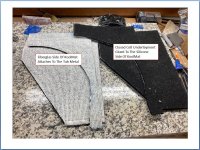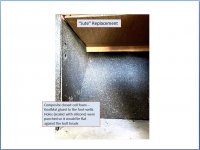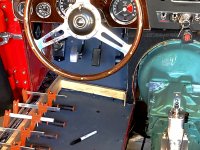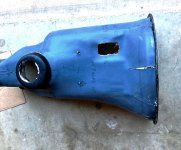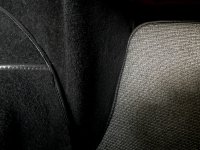AUSMHLY
Yoda
Offline
Hello,
Another carpet question.
BJ8 tranny carpet has jute under it, with carpet held in place by snaps. (All carpet is unbound.)
How does the transmission carpet tunnel meet the bulkhead carpet?
Does tranny carpet stop at the fiberglass tunnel lip, or does it extend past, example by an inch?
Does the bulkhead carpet have jute behind it?
How is the carpet (with or without jute) attached to the bulkhead front and side?
Does the tranny carpet go over or under the bulkhead carpet?
Looking for a clean look where they meet.
The tunnel use 8 sheet metal screws through the bottom lip (4 per side) to hold the tunnel down.
Did the factory use any sheet metal screws on the front lip to bulkhead?
Anyone have any photos of this area?
Another carpet question.
BJ8 tranny carpet has jute under it, with carpet held in place by snaps. (All carpet is unbound.)
How does the transmission carpet tunnel meet the bulkhead carpet?
Does tranny carpet stop at the fiberglass tunnel lip, or does it extend past, example by an inch?
Does the bulkhead carpet have jute behind it?
How is the carpet (with or without jute) attached to the bulkhead front and side?
Does the tranny carpet go over or under the bulkhead carpet?
Looking for a clean look where they meet.
The tunnel use 8 sheet metal screws through the bottom lip (4 per side) to hold the tunnel down.
Did the factory use any sheet metal screws on the front lip to bulkhead?
Anyone have any photos of this area?
Last edited:

 Hi Guest!
Hi Guest!

 smilie in place of the real @
smilie in place of the real @
 Pretty Please - add it to our Events forum(s) and add to the calendar! >>
Pretty Please - add it to our Events forum(s) and add to the calendar! >> 
